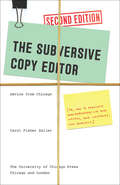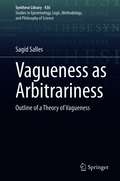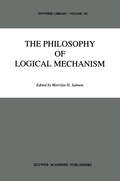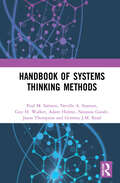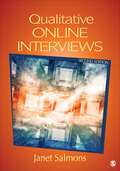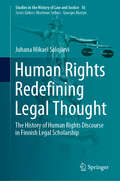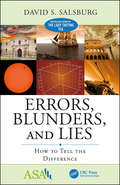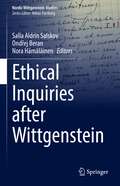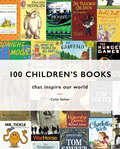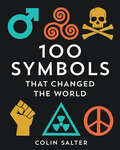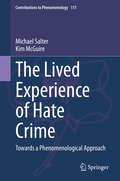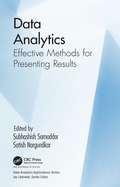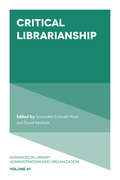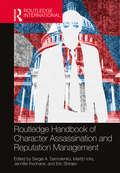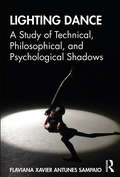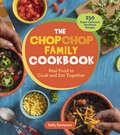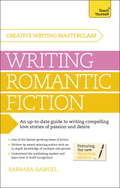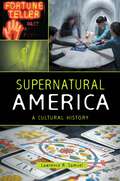- Table View
- List View
The Subversive Copy Editor, Second Edition: Advice from Chicago (or, How to Negotiate Good Relationships with Your Writers, Your Colleagues, and Yourself) (Chicago Guides to Writing, Editing, and Publishing)
by Carol Fisher SallerLongtime manuscript editor and Chicago Manual of Style guru Carol Fisher Saller has negotiated many a standoff between a writer and editor refusing to compromise on the “rights” and “wrongs” of prose styling. Saller realized that when these sides squared off, it was often the reader who lost. In her search for practical strategies for keeping the peace, The Subversive Copy Editor was born. Saller’s ideas struck a chord, and the little book with big advice quickly became a must-have reference for copy editors everywhere. In this second edition, Saller adds new chapters, on the dangers of allegiance to outdated grammar and style rules and on ways to stay current in language and technology. She expands her advice for writers on formatting manuscripts for publication, on self-editing, and on how not to be “difficult.” Saller’s own gaffes provide firsthand (and sometimes humorous) examples of exactly what not to do. The revised content reflects today’s publishing practices while retaining the self-deprecating tone and sharp humor that helped make the first edition so popular. Saller maintains that through carefulness, transparency, and flexibility, editors can build trust and cooperation with writers. The Subversive Copy Editor brings a refreshingly levelheaded approach to the classic battle between writers and editors. This sage advice will prove useful and entertaining to anyone charged with the sometimes perilous task of improving the writing of others.
The Subversive Copy Editor, Second Edition: Advice from Chicago (or, How to Negotiate Good Relationships with Your Writers, Your Colleagues, and Yourself) (Chicago Guides to Writing, Editing, and Publishing)
by Carol Fisher SallerLongtime manuscript editor and Chicago Manual of Style guru Carol Fisher Saller has negotiated many a standoff between a writer and editor refusing to compromise on the “rights” and “wrongs” of prose styling. Saller realized that when these sides squared off, it was often the reader who lost. In her search for practical strategies for keeping the peace, The Subversive Copy Editor was born. Saller’s ideas struck a chord, and the little book with big advice quickly became a must-have reference for copy editors everywhere. In this second edition, Saller adds new chapters, on the dangers of allegiance to outdated grammar and style rules and on ways to stay current in language and technology. She expands her advice for writers on formatting manuscripts for publication, on self-editing, and on how not to be “difficult.” Saller’s own gaffes provide firsthand (and sometimes humorous) examples of exactly what not to do. The revised content reflects today’s publishing practices while retaining the self-deprecating tone and sharp humor that helped make the first edition so popular. Saller maintains that through carefulness, transparency, and flexibility, editors can build trust and cooperation with writers. The Subversive Copy Editor brings a refreshingly levelheaded approach to the classic battle between writers and editors. This sage advice will prove useful and entertaining to anyone charged with the sometimes perilous task of improving the writing of others.
Vagueness as Arbitrariness: Outline of a Theory of Vagueness (Synthese Library #436)
by Sagid SallesThis book proposes a new solution to the problem of vagueness. There are several different ways of addressing this problem and no clear agreement on which one is correct. The author proposes that it should be understood as the problem of explaining vague predicates in a way that systematizes six intuitions about the phenomenon and satisfies three criteria of adequacy for an ideal theory of vagueness. The third criterion, which is called the “criterion of precisification”, is the most controversial one. It is based on the intuition that a predicate is vague only if it is imprecise. The author considers some different definitions of linguistic imprecision, proposing that a predicate is imprecise if and only if there is no sharp boundary between objects to which its application yields some particular truth-value and objects to which its application does not yield that truth-value. The volume critically reviews the current theories of vagueness and proposes a new one, the Theory of Vagueness as Arbitrariness, which defines a vague predicate as an arbitrary predicate that must be precisified in order to contribute to a sentence that has truth-conditions. The main advantages of this theory over the current alternatives are that it satisfies all three criteria and systematizes the relevant intuitions.
The Philosophy of Logical Mechanism: Essays in Honor of Arthur W. Burks, With his responses (Synthese Library #206)
by Merrilee H. SalmonThis work is divided into two parts. Part I contains sixteen critical es says by prominent philosophers and computer scientists. Their papers offer insightful, well-argued contemporary views of a broad range of topics that lie at the heart of philosophy in the second half of the twen tieth century: semantics and ontology, induction, the nature of prob ability, the foundations of science, scientific objectivity, the theory of naming, the logic of conditionals, simulation modeling, the relatiOn be tween minds and machines, and the nature of rules that guide be havior. In this volume honoring Arthur W. Burks, the philosophical breadth of his work is thus manifested in the diverse aspects of that work chosen for discussion and development by the contributors to his Festschrift. Part II consists of a book-length essay by Burks in which he lays out his philosophy of logical mechanism while responding to the papers in Part I. In doing so, he provides a unified and coherent context for the range of problems raised in Part I, and he highlights interesting relationships among the topics that might otherwise have gone un noticed. Part II is followed by a bibliography of Burks's published works.
Handbook of Systems Thinking Methods
by Paul M. Salmon Neville A. Stanton Guy H. Walker Adam Hulme Natassia Goode Jason Thompson Gemma J.M. ReadThe systems thinking philosophy has become popular in human factors and ergonomics and safety science. These methods are being used to understand and resolve complex societal problems in areas such as transport safety, workplace safety, medication error, disaster management, child abuse, financial crises, terrorism, climate change and public health and wellbeing. This handbook presents practical step-by-step guidance for practitioners and researchers wishing to use these methods to tackle complex problems. Each method includes an example case study which demonstrates how the method can be applied and how the results can be interpreted and translated into practical recommendations. The book presents practical guidance on state-of-the-art systems thinking methods and offers case study applications describing systems thinking methods in novel areas. It explains how to translate the outputs of systems thinking methods in practice and introduces systems thinking with an overview of Human Factors and Ergonomics applications. This book will serve as a great reference for students and engineers in the field of systems engineering, complex systems and the design and development of systems, including ergonomics/human factors and systems engineers, designers, architects, industrial engineers, project management engineers, reliability engineers, risk engineers, software engineers and computer engineers.
Handbook of Systems Thinking Methods
by Paul M. Salmon Neville A. Stanton Guy H. Walker Adam Hulme Natassia Goode Jason Thompson Gemma J.M. ReadThe systems thinking philosophy has become popular in human factors and ergonomics and safety science. These methods are being used to understand and resolve complex societal problems in areas such as transport safety, workplace safety, medication error, disaster management, child abuse, financial crises, terrorism, climate change and public health and wellbeing. This handbook presents practical step-by-step guidance for practitioners and researchers wishing to use these methods to tackle complex problems. Each method includes an example case study which demonstrates how the method can be applied and how the results can be interpreted and translated into practical recommendations. The book presents practical guidance on state-of-the-art systems thinking methods and offers case study applications describing systems thinking methods in novel areas. It explains how to translate the outputs of systems thinking methods in practice and introduces systems thinking with an overview of Human Factors and Ergonomics applications. This book will serve as a great reference for students and engineers in the field of systems engineering, complex systems and the design and development of systems, including ergonomics/human factors and systems engineers, designers, architects, industrial engineers, project management engineers, reliability engineers, risk engineers, software engineers and computer engineers.
Qualitative Online Interviews: Strategies, Design, And Skills
by Janet SalmonsThe Second Edition of Qualitative Online Interviews provides researchers the guidance they need to extend the reach of their studies beyond physical boundaries. Focusing on designing, conducting, and assessing data drawn from online interviews as well as from observations, materials, and artifacts collected online, the book emphasizes the use of in-depth interviews in qualitative research or mixed-methods designs. Written in an easy-to-read manner, the thorough Second Edition offers the practical information and scholarly foundations needed to make thoughtful decisions in technology-infused research.
Human Rights Redefining Legal Thought: The History of Human Rights Discourse in Finnish Legal Scholarship (Studies in the History of Law and Justice #16)
by Juhana Mikael SalojärviThis book investigates the origins and development of human rights discourse in Finnish legal scholarship in the twentieth century. It provides a detailed account of how human rights were understood before they had legal relevance in a positivist sense, how they were adapted to Finnish legal thinking in the post-Second World War decades, how they developed into a mode of legal rhetoric and a type of legal argument during the 1970s and 1980s, and how they eventually became a significant paradigm in legal thinking in the 1990s. The book also demonstrates how rights discourse infiltrated the discussion regarding problems that were previously addressed in arguments concerning morals, social justice and equity. Although the book focuses on the history of Finnish legal scholarship, it is also interesting from a global perspective for two reasons: Firstly, it demonstrates how an idea of international law is transplanted and diffused into national legal thinking; Finland is an illustrative example in this regard. Secondly, it offers insights into the general history of human rights.
Errors, Blunders, and Lies: How to Tell the Difference (ASA-CRC Series on Statistical Reasoning in Science and Society)
by David S. SalsburgWe live in a world that is not quite "right." The central tenet of statistical inquiry is that Observation = Truth + Error because even the most careful of scientific investigations have always been bedeviled by uncertainty. Our attempts to measure things are plagued with small errors. Our attempts to understand our world are blocked by blunders. And, unfortunately, in some cases, people have been known to lie. In this long-awaited follow-up to his well-regarded bestseller, The Lady Tasting Tea, David Salsburg opens a door to the amazing widespread use of statistical methods by looking at historical examples of errors, blunders and lies from areas as diverse as archeology, law, economics, medicine, psychology, sociology, Biblical studies, history, and war-time espionage. In doing so, he shows how, upon closer statistical investigation, errors and blunders often lead to useful information. And how statistical methods have been used to uncover falsified data. Beginning with Edmund Halley’s examination of the Transit of Venus and ending with a discussion of how many tanks Rommel had during the Second World War, the author invites the reader to come along on this easily accessible and fascinating journey of how to identify the nature of errors, minimize the effects of blunders, and figure out who the liars are.
Errors, Blunders, and Lies: How to Tell the Difference (ASA-CRC Series on Statistical Reasoning in Science and Society)
by David S. SalsburgWe live in a world that is not quite "right." The central tenet of statistical inquiry is that Observation = Truth + Error because even the most careful of scientific investigations have always been bedeviled by uncertainty. Our attempts to measure things are plagued with small errors. Our attempts to understand our world are blocked by blunders. And, unfortunately, in some cases, people have been known to lie. In this long-awaited follow-up to his well-regarded bestseller, The Lady Tasting Tea, David Salsburg opens a door to the amazing widespread use of statistical methods by looking at historical examples of errors, blunders and lies from areas as diverse as archeology, law, economics, medicine, psychology, sociology, Biblical studies, history, and war-time espionage. In doing so, he shows how, upon closer statistical investigation, errors and blunders often lead to useful information. And how statistical methods have been used to uncover falsified data. Beginning with Edmund Halley’s examination of the Transit of Venus and ending with a discussion of how many tanks Rommel had during the Second World War, the author invites the reader to come along on this easily accessible and fascinating journey of how to identify the nature of errors, minimize the effects of blunders, and figure out who the liars are.
Ethical Inquiries after Wittgenstein (Nordic Wittgenstein Studies #8)
by Salla Aldrin Salskov Ondřej Beran Nora HämäläinenThis volume showcases contemporary, ground-up ethical essays in the tradition of Wittgenstein’s broader philosophy and Wittgenstein-inspired ethical reflection. It takes the ethical relevance of Wittgenstein as a substantial and solid starting point for a broad range of ongoing thinking about contemporary ethical issues.The texts are organised in two sections. The first consists of chapters exploring questions around what could be called the “grammar” of our moral forms of life, and thus represents a more traditional approach in ethics after Wittgenstein. The second part represents a recent turn in the tradition towards investigating moral conceptions, perspectives and concepts that are undergoing change, either because the world itself is changing (for instance with new technologies) or because human agency, such as social movements, has brought us to reconsider previously unquestioned ideas and structures.Within the book, the authors’ contributions are inspired, in their ways of working with ethical questions, by Wittgenstein’s conceptions of language, understanding and the nature of philosophical inquiry. This book is of interest to philosophers influenced by Wittgenstein, as well as to all ethicists seeking ideas for how to do philosophy in a manner close to lived experience and practice.
Newsletters and Press Releases: Bullet Guides (Bullet Guides)
by Brian SalterOpen this book and you will- Get people's attention- Write compelling copy- Make an impact in the media- Keep your customers coming back
100 Children's Books: That Inspire Our World
by Colin SalterAn amazing guide to some of the most beloved, original, inspiring, hysterical, heart-warming, compelling, rude and downright scary books that have enchanted children the world over.
100 Symbols That Changed the World
by Colin Salter100 Symbols That Changed The World looks at the genesis and adoption of the world’s most recognizable symbols.
The Lived Experience of Hate Crime: Towards a Phenomenological Approach (Contributions to Phenomenology #111)
by Michael Salter Kim McGuireThis book approaches the topic of the subjective, lived experience of hate crime from the perspective of Husserlian phenomenology. It provides an experientially well-grounded account of how and what is experienced as a hate crime, and what this reveals about ourselves as the continually reconstituted “subject” of such experiences. The book shows how qualitative social science methods can be better grounded in philosophically informed theory and methodological practices to add greater depth and explanatory power to experiential approaches to social sciences topics. The Authors also highlight several gaps and contradictions within Husserlian analyses of prejudice, which are exposed by attempts to concretely apply this approach to the field of hate crimes.Coverage includes the difficulties in providing an empathetic understanding of expressions of harmful forms of prejudice underlying hate crimes, including hate speech, arising from our own and others’ ‘life worlds’. The Authors describe a ‘Husserlian-based’ view of hate crime as well as a novel interpretation of the value of the comprehensive methodological stages pioneered by Husserl. The intended readership includes those concerned with discrimination and hate crime, as well as those involved in qualitative research into social topics in general. The broader content level makes this work suitable for undergraduate and postgraduate students, even professionals within law enforcement.
Data Analytics: Effective Methods for Presenting Results (Data Analytics Applications)
by Subhashish Samaddar Satish NargundkarIf you are a manager who receives the results of any data analyst’s work to help with your decision-making, this book is for you. Anyone playing a role in the field of analytics can benefit from this book as well. In the two decades the editors of this book spent teaching and consulting in the field of analytics, they noticed a critical shortcoming in the communication abilities of many analytics professionals. Specifically, analysts have difficulty in articulating in business terms what their analyses showed and what actionable recommendations were made. When analysts made presentations, they tended to lapse into the technicalities of mathematical procedures, rather than focusing on the strategic and tactical impact and meaning of their work. As analytics has become more mainstream and widespread in organizations, this problem has grown more acute. Data Analytics: Effective Methods for Presenting Results tackles this issue. The editors have used their experience as presenters and audience members who have become lost during presentation. Over the years, they experimented with different ways of presenting analytics work to make a more compelling case to top managers. They have discovered tried and true methods for improving presentations, which they share. The book also presents insights from other analysts and managers who share their own experiences. It is truly a collection of experiences and insight from academics and professionals involved with analytics. The book is not a primer on how to draw the most beautiful charts and graphs or about how to perform any specific kind of analysis. Rather, it shares the experiences of professionals in various industries about how they present their analytics results effectively. They tell their stories on how to win over audiences. The book spans multiple functional areas within a business, and in some cases, it discusses how to adapt presentations to the needs of audiences at different levels of management.
Data Analytics: Effective Methods for Presenting Results (Data Analytics Applications)
by Subhashish Samaddar Satish NargundkarIf you are a manager who receives the results of any data analyst’s work to help with your decision-making, this book is for you. Anyone playing a role in the field of analytics can benefit from this book as well. In the two decades the editors of this book spent teaching and consulting in the field of analytics, they noticed a critical shortcoming in the communication abilities of many analytics professionals. Specifically, analysts have difficulty in articulating in business terms what their analyses showed and what actionable recommendations were made. When analysts made presentations, they tended to lapse into the technicalities of mathematical procedures, rather than focusing on the strategic and tactical impact and meaning of their work. As analytics has become more mainstream and widespread in organizations, this problem has grown more acute. Data Analytics: Effective Methods for Presenting Results tackles this issue. The editors have used their experience as presenters and audience members who have become lost during presentation. Over the years, they experimented with different ways of presenting analytics work to make a more compelling case to top managers. They have discovered tried and true methods for improving presentations, which they share. The book also presents insights from other analysts and managers who share their own experiences. It is truly a collection of experiences and insight from academics and professionals involved with analytics. The book is not a primer on how to draw the most beautiful charts and graphs or about how to perform any specific kind of analysis. Rather, it shares the experiences of professionals in various industries about how they present their analytics results effectively. They tell their stories on how to win over audiences. The book spans multiple functional areas within a business, and in some cases, it discusses how to adapt presentations to the needs of audiences at different levels of management.
Critical Librarianship (Advances in Library Administration and Organization #41)
by Samantha Schmehl Hines and David H. KetchumLibrarianship has always had links with critical theory. As a public service, libraries cannot be separated from the society they exist in, and investigating the aspects of the culture they exist in is an important responsibility for all library and information professionals. In this exciting exploration of critical librarianship, expert authors from different walks of life investigate a variety of areas of librarianship in regards to critical theory. With chapters on feminist theory, sustainability and social justice, inclusivity, autism, and new motherhood, among others, this volume of Advances in Librarianship focuses on some of the most relevant issues of the 21st Century. With rigorous scholarship and diverse voices, Critical Librarianship is an unmissable volume of current research for all library and information professionals and researchers.
Routledge Handbook of Character Assassination and Reputation Management (Routledge International Handbooks)
by Sergei A. Samoilenko Martijn Icks Jennifer Keohane Eric B. ShiraevIn modern politics as well as in historical times, character attacks abound. Words and images, like symbolic and psychological weapons, have sullied or destroyed numerous reputations. People mobilize significant material and psychological resources to defend themselves against such attacks. How does character assassination "work," and when does it not? Why do many targets fall so easily when they are under character attack? How can one prevent attacks and defend against them? The Routledge Handbook of Character Assassination and Reputation Management offers the first comprehensive examination of character assassination. Moving beyond studying corporate reputation management and how public figures enact and maintain their reputation, this lively volume offers a framework and cases to help understand, critically analyze, and effectively defend against such attacks. Written by an international and interdisciplinary team of experts, the book begins with a theoretical introduction and extensive description of the "five pillars" of character assassination: (1) the attacker, (2) the target, (3) the media, (4) the public, and (5) the context. The remaining chapters present engaging case studies suitable for class discussion. These include: Roman emperors; Reformation propaganda; the Founding Fathers; defamation in US politics; women politicians; autocratic regimes; European leaders; celebrities; nations; Internet campaigns. This handbook will prove invaluable to undergraduate and postgraduate students in communication, political science, history, sociology, and psychology departments. It will also help researchers become independent, critical, and informed thinkers capable of avoiding the pressure and manipulations of the media.
Routledge Handbook of Character Assassination and Reputation Management (Routledge International Handbooks)
by Sergei A. Samoilenko Martijn Icks Jennifer Keohane Eric B. ShiraevIn modern politics as well as in historical times, character attacks abound. Words and images, like symbolic and psychological weapons, have sullied or destroyed numerous reputations. People mobilize significant material and psychological resources to defend themselves against such attacks. How does character assassination "work," and when does it not? Why do many targets fall so easily when they are under character attack? How can one prevent attacks and defend against them? The Routledge Handbook of Character Assassination and Reputation Management offers the first comprehensive examination of character assassination. Moving beyond studying corporate reputation management and how public figures enact and maintain their reputation, this lively volume offers a framework and cases to help understand, critically analyze, and effectively defend against such attacks. Written by an international and interdisciplinary team of experts, the book begins with a theoretical introduction and extensive description of the "five pillars" of character assassination: (1) the attacker, (2) the target, (3) the media, (4) the public, and (5) the context. The remaining chapters present engaging case studies suitable for class discussion. These include: Roman emperors; Reformation propaganda; the Founding Fathers; defamation in US politics; women politicians; autocratic regimes; European leaders; celebrities; nations; Internet campaigns. This handbook will prove invaluable to undergraduate and postgraduate students in communication, political science, history, sociology, and psychology departments. It will also help researchers become independent, critical, and informed thinkers capable of avoiding the pressure and manipulations of the media.
Lighting Dance: A Study of Technical, Philosophical, and Psychological Shadows
by Flaviana Xavier SampaioLighting Dance pioneers the discussion of the ability of lighting design to foreground shadow in dance performances. Through a series of experiments integrating light, shadow, and improvised dance movement, it highlights and analyses what it advances as an innovative expression of shadow in dance as an alternative to more conventional approaches to lighting design. Different art forms, such as painting, film, and dance pieces from Loie Fuller, the Russell Maliphant Dance Company, Elevenplay, Pilobolus, and the Tao Dance Theater served to inspire and contextualise the study. From lighting to psychology, from reviews to academic books, shadows are examined as a symbolic and manipulative entity. The book also presents the dance solo Sombreiro, which was created to echo the experiments with light, shadow, and movement aligned to an interpretation of cultural shadow (Jung 1954, in Samuels, Shorter, and Plaut 1986; Casement 2006; Ramos 2004; Stein 2004; and others). The historical development of lighting within dance practices is also outlined, providing a valuable resource for lighting designers, dance practitioners, and theatre goers interested in the visuality of dance performances.
Lighting Dance: A Study of Technical, Philosophical, and Psychological Shadows
by Flaviana Xavier SampaioLighting Dance pioneers the discussion of the ability of lighting design to foreground shadow in dance performances. Through a series of experiments integrating light, shadow, and improvised dance movement, it highlights and analyses what it advances as an innovative expression of shadow in dance as an alternative to more conventional approaches to lighting design. Different art forms, such as painting, film, and dance pieces from Loie Fuller, the Russell Maliphant Dance Company, Elevenplay, Pilobolus, and the Tao Dance Theater served to inspire and contextualise the study. From lighting to psychology, from reviews to academic books, shadows are examined as a symbolic and manipulative entity. The book also presents the dance solo Sombreiro, which was created to echo the experiments with light, shadow, and movement aligned to an interpretation of cultural shadow (Jung 1954, in Samuels, Shorter, and Plaut 1986; Casement 2006; Ramos 2004; Stein 2004; and others). The historical development of lighting within dance practices is also outlined, providing a valuable resource for lighting designers, dance practitioners, and theatre goers interested in the visuality of dance performances.
The ChopChop Family Cookbook: Real Food to Cook and Eat Together; 250 Super-Delicious, Nutritious Recipes
by Sally SampsonFrom the creators of the popular ChopChop Family magazine, this colorful cookbook features more than 250 recipes and cooking tips that make it fun and easy for families and kids to learn to cook and enjoy delicious, nutritious, affordable meals together.
Masterclass: A modern guide to writing compelling love stories of passion and desire
by Barbara SamuelLEARN HOW TO WRITE ROMANTIC FICTION WHICH TAKES THE BREATH AWAY.Do you want to capture the share of the fastest growing market in fiction?Do you have a compelling vision for a passionate love story? Masterclass: Write Romantic Fiction is designed for anyone who wants to write in this genre of popular fiction, whatever their focus. It is the only book available to cover the new and increasingly diverse sub-genres in romance to give insight into how to write really good eroticism, and to show aspiring writers how to gain recognition for their work. Whether contemplating self-publishing or going the traditional route, this is a smart and completely contemporary guide to writing sellable, credible and memorable romance.ABOUT THE SERIESThe Teach Yourself Creative Writing series helps aspiring authors tell their story. Covering a range of genres from science fiction and romantic novels, to illustrated children's books and comedy, this series is packed with advice, exercises and tips for unlocking creativity and improving your writing. And because we know how daunting the blank page can be, we set up the Just Write online community at tyjustwrite, for budding authors and successful writers to connect and share.
Supernatural America: A Cultural History
by Lawrence R. SamuelThis book is much more than an authoritative and compelling look at the cultural history of the supernatural over the last century in America—it also explains why we want to believe.The supernatural—psychic phenomena (telepathy, clairvoyance, or ESP), communicating with the dead, and the sighting and tracking of ghosts—has played an integral role in American culture across the last century. In fact, attention and interest in the supernatural has increased, despite our society's reliance upon and enthusiasm for science and technology. Even some top scholars, officials from the military and police, and public figures in places as high as the Oval Office have believed in at least some aspects of the supernatural.Supernatural America: A Cultural History is the first book to examine the cultural history of the supernatural in the United States, documenting how the expansion of science and technology coincided with a rise in supernatural/paranormal beliefs. From the flourishing of "spiritism" in the 1920s to the early 21st century, when the paranormal is bigger than ever, this entertaining and educational book explains the irresistible allure of the supernatural in America.
